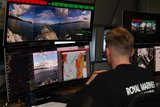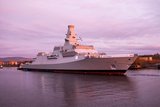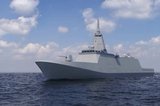Boeing’s Maritime Surveillance Aircraft ready to demo
Boeing has completed baseline ground and flight testing of the Maritime Surveillance Aircraft (MSA) mission systems, clearing the way for customer demonstration flights to begin.
The MSA programme testing included scenarios to confirm performance of the Automatic Identification System, radar, Electro-Optical Infrared camera, communications radios and data links, Communications Intelligence System and the Electronic Support Measures.
David Utz, MSA demonstrator flight test manager, Boeing, said: ‘The mission systems flight test programme proved the functionality and performance of the onboard sensors and was a huge accomplishment for the MSA team.’
The aircraft completed airworthiness and certification testing in 2014.
MSA is a multi-intelligence maritime surveillance platform that draws on technology developed for Boeing’s P-8A Poseidon and the Airborne Warning and Control System Block 40/45 aircraft mission systems. It is designed to provide a high capability, low-risk intelligence, surveillance and reconnaissance solution in a mid-size business jet.
The aircraft’s potential missions include anti-piracy, immigration patrols, Economic Exclusion Zone enforcement, coastal and border security and long-range search and rescue.
More from Naval Warfare
-
![NATO tests use of “undetectable, jam-proof” laser communication in maritime scenarios]()
NATO tests use of “undetectable, jam-proof” laser communication in maritime scenarios
As part of its effort to better prepare its capabilities for operations in contested and congested scenarios, NATO evaluated a Lithuanian ship-to-ship terminal designed to not be susceptible to enemy interference.
-
![US Navy advances with the Harpoon Service Life Extension Programme]()
US Navy advances with the Harpoon Service Life Extension Programme
The US Navy plans to improve Harpoon’s anti-ship and land attack capabilities by equipping the missiles with sensors and technologies required for succeeding in future battlespace.
-
![Mitsubishi eyes future with Australia’s Mogami selection]()
Mitsubishi eyes future with Australia’s Mogami selection
With Australia’s selection of the Mogami-class for Project Sea 3000, Mitsubishi is investigating local production in the next decade as potential export opportunities emerge.
-
![Thales’ new Sonar 76Nano could equip UK Royal Navy on anti-submarine warfare missions]()
Thales’ new Sonar 76Nano could equip UK Royal Navy on anti-submarine warfare missions
The new sonar is designed to equip uncrewed underwater vessels, with the potential to be used by the Royal Navy for its Atlantic Bastion and Atlantic Net missions.
-
![Hanwha wins Australian government approval to increase its stake in Austal]()
Hanwha wins Australian government approval to increase its stake in Austal
The contract would mean the two shipbuilders can collaborate strategically and enhance shipbuilding capabilities in Western Australia.
























